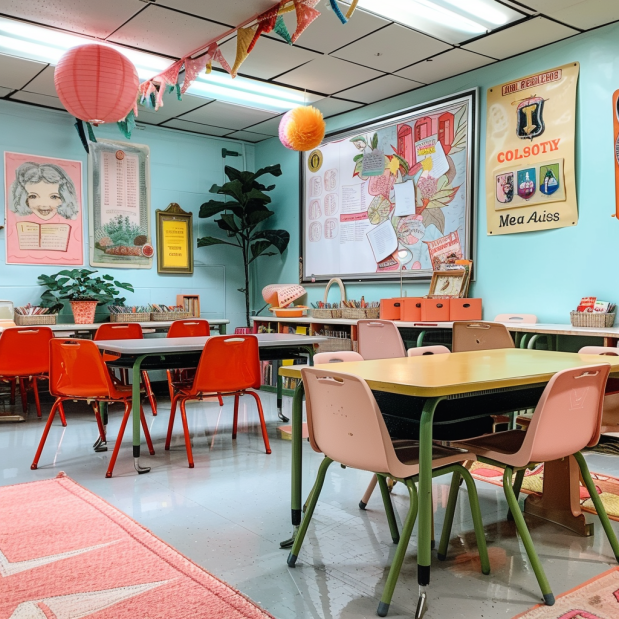The classroom is more than just a place where students receive instruction; it is a dynamic environment that shapes learning and helps foster creativity and collaboration. As our understanding of effective teaching methods evolves, the design and atmosphere of classrooms become increasingly important. This article delves into 15 inspiring classroom designs that aim to enhance the learning experience and adapt to the changing needs of students.
Creating an engaging classroom involves integrating functionality with aesthetics, creating spaces where students feel comfortable and motivated to learn. From flexible seating arrangements to vibrant color schemes, these ideas showcase how thoughtful design can transform a classroom into a stimulating educational environment.
1. Flexible Seating
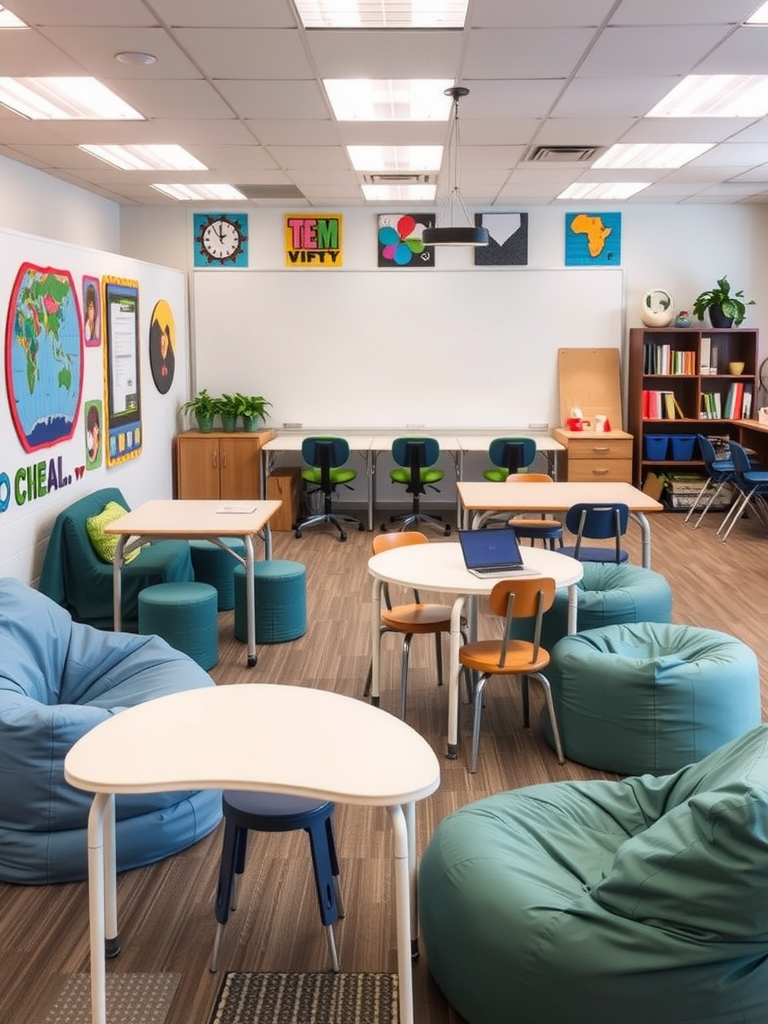
Flexible seating arrangements allow students to choose where and how they want to work. By incorporating various seating options such as bean bags, standing desks, and collaborative tables, educators can create a more inviting and engaging space. This setup encourages movement and collaboration, catering to different learning styles.
With flexible seating, students can arrange their environments to suit specific activities, fostering a sense of ownership over their learning process and promoting a more comfortable atmosphere.
2. Nature-Inspired Design
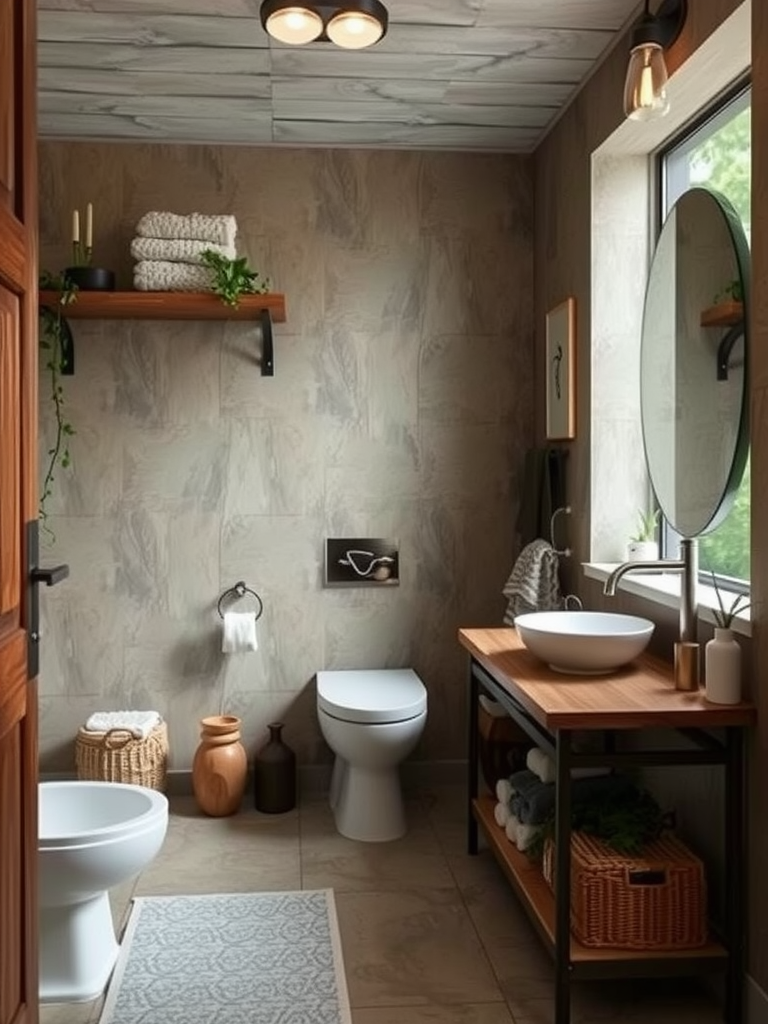
Integrating elements of nature into classroom design can significantly enhance students’ well-being and concentration. This can include the use of natural materials, green plants, and plenty of natural light. Biophilic design principles help connect students with the natural world, promoting calmness and focus.
Incorporating nature-inspired designs not only beautifies the space but also reminds students of their interconnectedness with their environment, encouraging mindfulness and environmental awareness.
3. Interactive Whiteboards
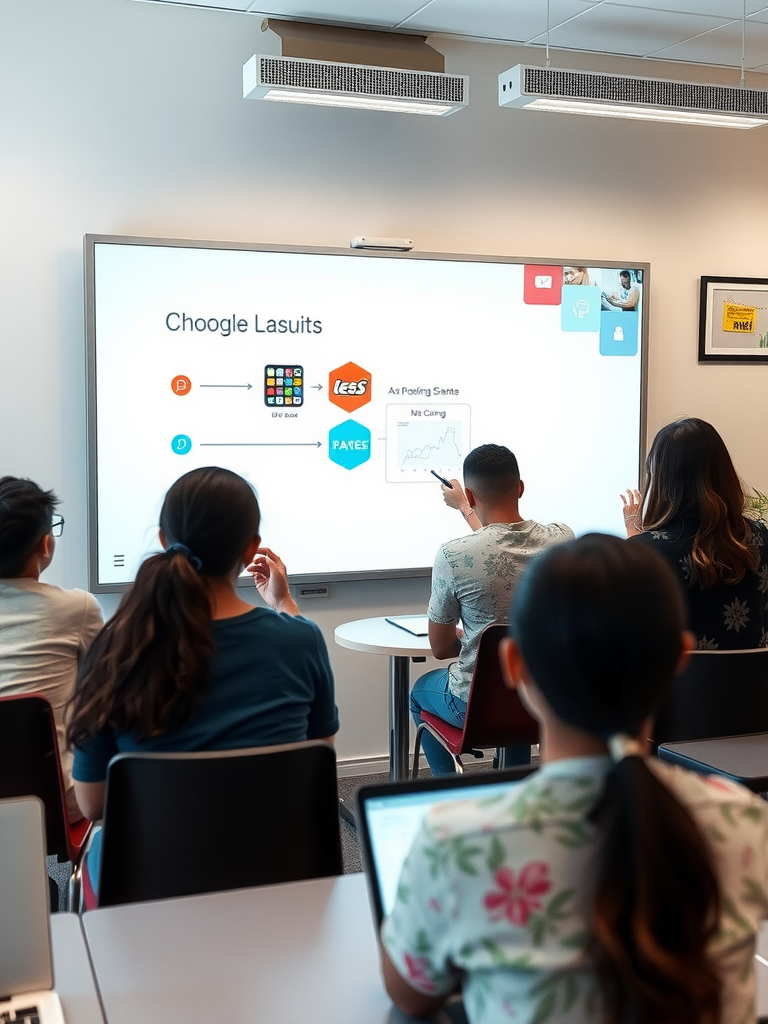
Interactive whiteboards transform traditional teaching methods by allowing teachers to engage students with multimedia presentations, collaborative exercises, and real-time feedback. The integration of technology in the classroom can make lessons more dynamic and interactive.
These boards also facilitate better communication among students and encourage participation, as they can jointly contribute to discussions and projects directly on the board.
4. Collaborative Learning Spaces
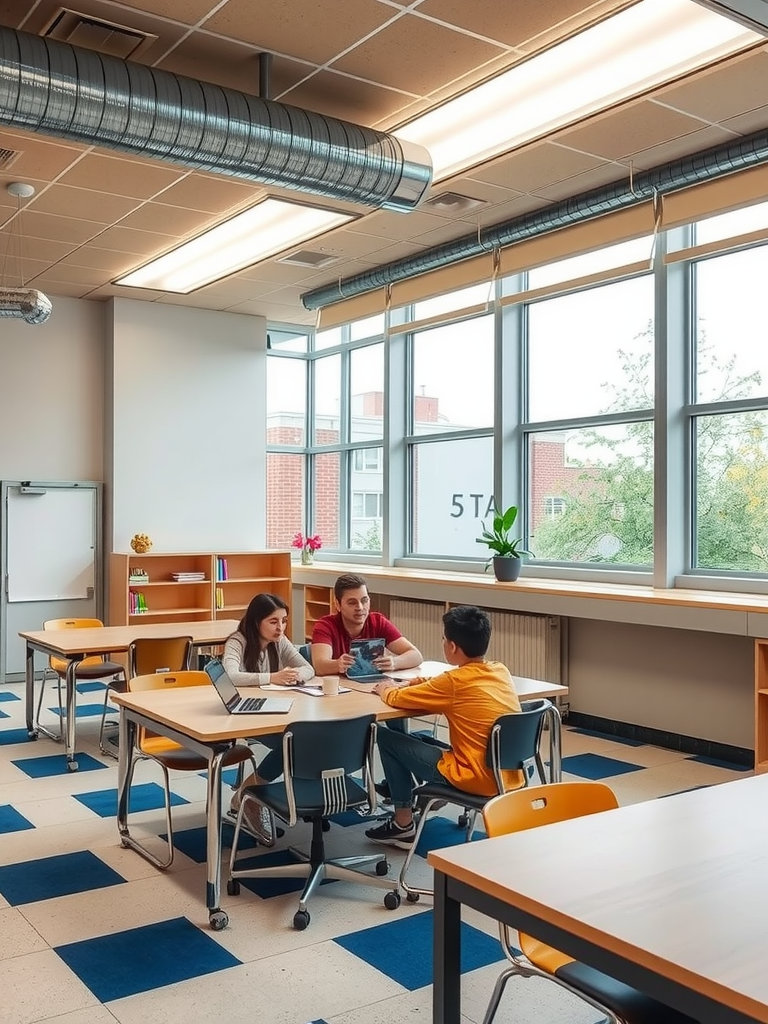
Designing areas specifically for group work fosters collaboration and teamwork among students. Classroom designs with clusters of tables or movable furniture help create a space where students can easily collaborate on projects and engage in group discussions.
These collaborative learning spaces not only inspire teamwork but also promote critical thinking and problem-solving skills, essential for students’ academic success.
5. Colorful Accents

Utilizing colors creatively in classroom design can stimulate students’ minds and enhance their mood. Bright colors, especially in decorative elements, can make a classroom feel more inviting and lively. Think colorful bulletin boards, artwork, and wall paints.
Incorporating a mix of colors can also help convey different subjects and areas of focus, energizing the learning environment and promoting engagement.
6. Themed Learning Zones
Creating themed zones within a classroom can make learning exciting and immersive. For instance, a reading corner might include a library-themed design, while a science area might feature stars and planets. These zones can stimulate students’ imaginations and create distinctive learning experiences.
Thematic designs promote an atmosphere of exploration, encouraging students to engage with the content and concepts in a fun way.
7. Technology Integration
Incorporating technology seamlessly into classroom design allows for a modern educational experience. Providing access to tablets, laptops, or other devices can facilitate personalized learning and research. A tech-friendly classroom can offer various learning tools and resources that adapt to students’ needs.
Educators can leverage technology to create engaging lesson plans that incorporate various digital platforms, making learning more interactive and appealing to students.
8. Quiet Zones
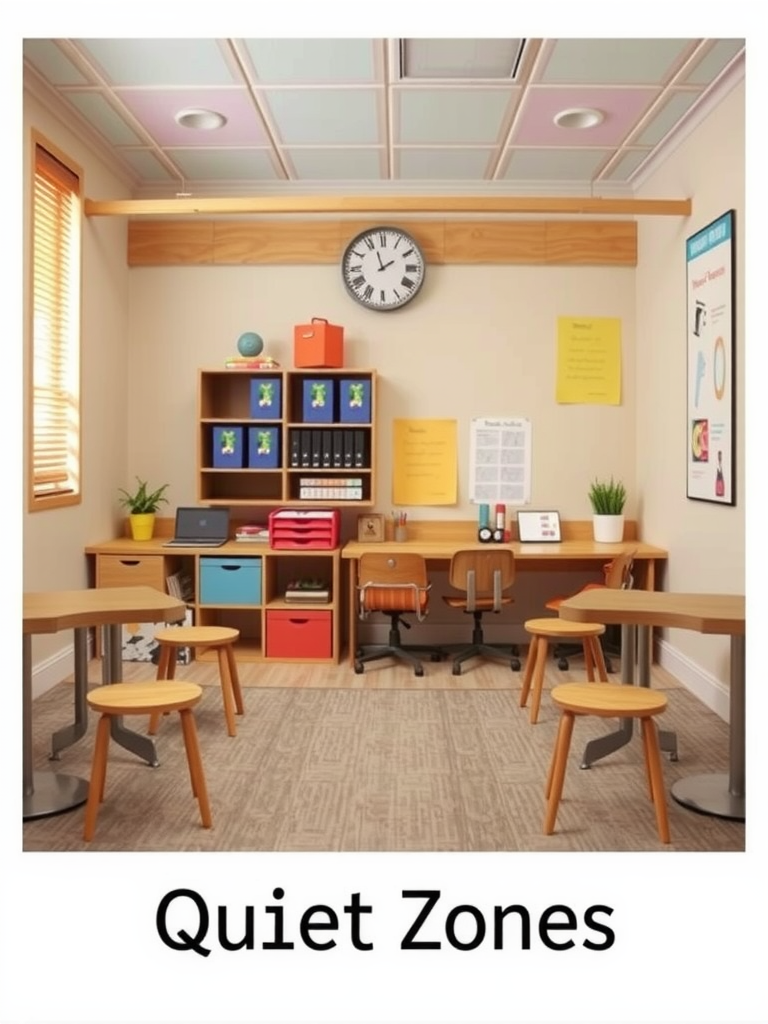
Establishing quiet zones within the classroom is crucial for nurturing a peaceful learning environment. Designating areas specifically for focused work helps students concentrate better and manage stress. These zones can include cozy nooks or soundproof sections with minimal distractions.
Quiet spaces offer students a chance to recharge and reflect, promoting mental well-being during intense learning activities.
9. Open Spaces
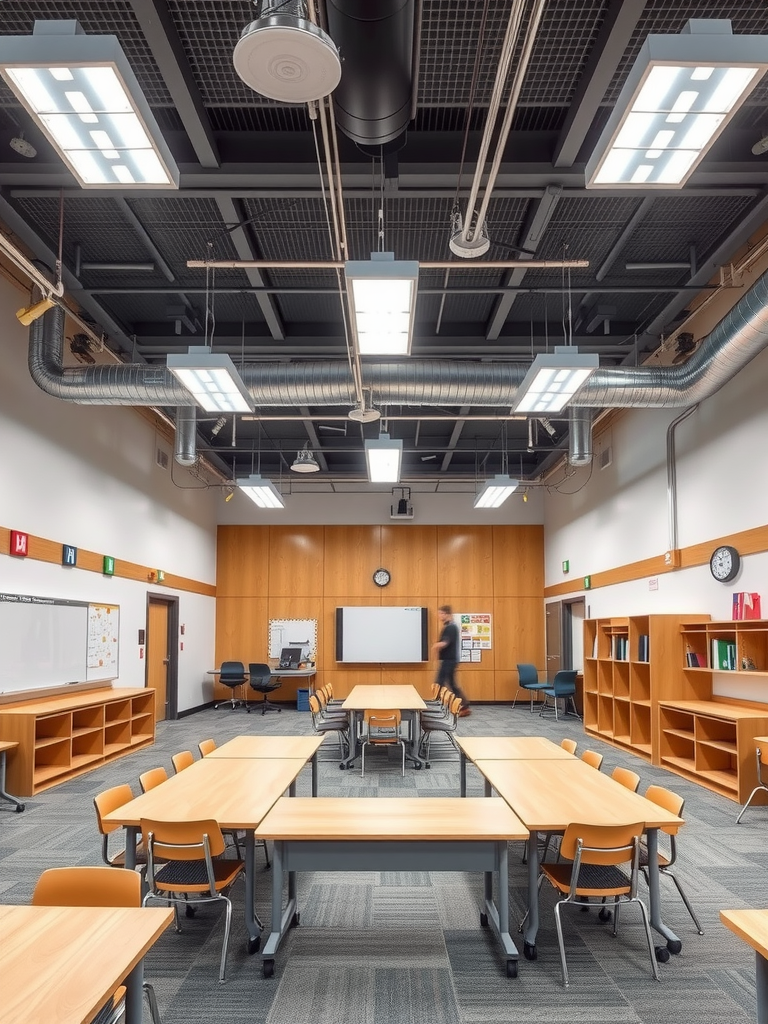
Open classroom designs facilitate ease of movement and encourage interaction among students and teachers. By removing physical barriers, educators can foster a community-like atmosphere that promotes collaboration and communication.
Open spaces also allow for adaptable layouts, making it easier to change configurations based on daily activities and learning goals.
10. Resource Stations
Establishing resource stations within the classroom can empower students to take charge of their learning. Offering supplies, reference materials, and tools in designated areas allows students to become more independent and resourceful in completing assignments.
Resource stations encourage exploration and inquiry, making them pivotal for hands-on learning experiences.
11. Artistic Expression
Encouraging artistic expression in the classroom can enhance creativity and self-expression among students. By creating spaces where students can showcase their artwork or participate in art projects, teachers promote appreciation for creativity.
A classroom filled with art contributes to a vibrant atmosphere, inspiring students to think outside the box and engage with learning in diverse ways.
12. Inspirational Quotes
Incorporating inspirational quotes into the classroom environment can boost student morale and motivation. Displaying uplifting messages on walls or bulletin boards serves as constant reminders for students to stay positive and focused on their goals.
These quotes can create an encouraging atmosphere and stimulate discussions around personal growth, resilience, and determination.
13. Comfortable Flooring
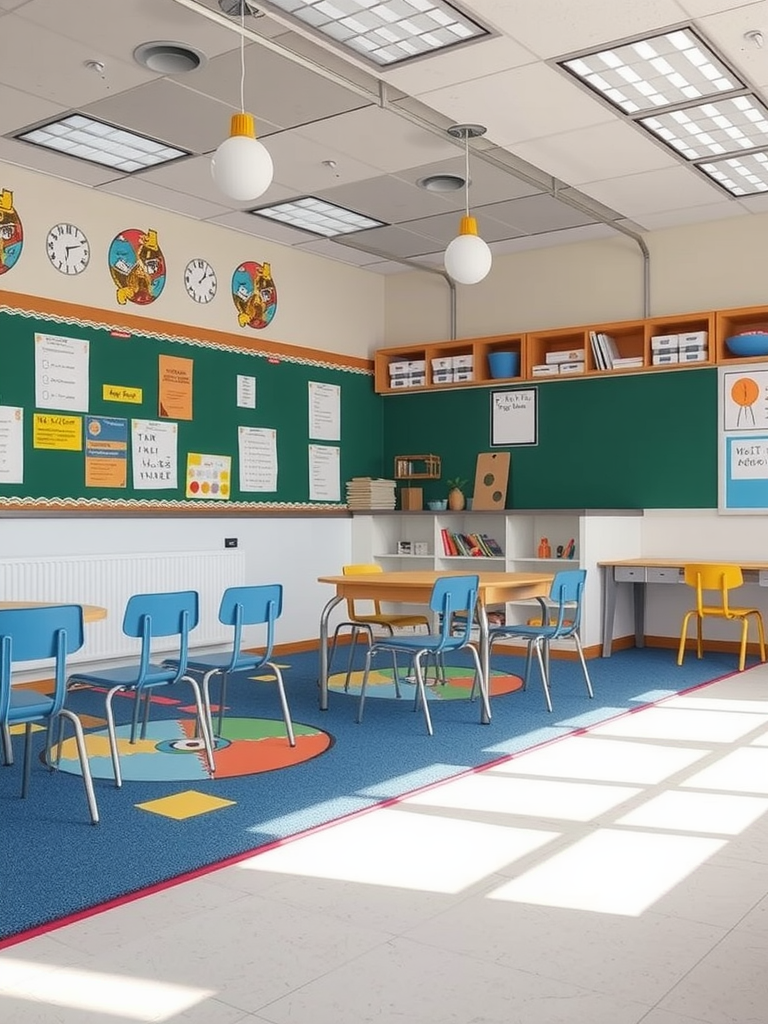
Choosing the right flooring is essential to ensure a comfortable space for students to learn. Soft carpets or rubber flooring can reduce noise levels and provide cushioning, creating a more pleasant environment. Flexible flooring options also allow for various activities, such as group work or independent study.
Comfortable flooring enhances the overall learning experience, encouraging students to engage more freely and actively participate in classroom activities.
14. Global Connections
Creating a classroom that reflects a global perspective can broaden students’ understanding of the world. Incorporating maps, cultural artifacts, and international resources fosters curiosity and cultural awareness among students.
A global-oriented classroom encourages empathy and social responsibility, preparing students to engage in a diverse and interconnected world.
15. Community Corner
Establishing a community corner within the classroom can strengthen relationships between students, teachers, and families. This area can be dedicated to showcasing achievements, announcements, and shared goals. By building a sense of community, students feel more connected and valued in their learning process.
A strong classroom community fosters collaboration and support, creating an environment where everyone feels empowered to contribute and succeed.
Conclusion
Designing an inspiring classroom involves a blend of creativity, functionality, and inclusion. By implementing elements from the various ideas discussed, educators can cultivate an environment that captivates and engages students. As classrooms evolve, they can become places that foster a love for learning and nurture the academic and personal growth of every student.
Frequently Asked Questions
What are the benefits of flexible seating in classrooms?
Flexible seating promotes student choice, comfort, and collaboration, leading to a more engaged learning environment.
How can I incorporate nature in my classroom?
Use natural materials, introduce plants, and maximize natural light to create a calming and stimulating space for learning.
What technology is essential for modern classrooms?
Essential technology includes interactive whiteboards, tablets, laptops, and classroom management software to facilitate learning.
How can I create a positive classroom community?
Establish routines, celebrate achievements, and encourage collaboration to foster a supportive and inclusive classroom environment.
How important is color in classroom design?
Color significantly impacts mood and learning; using a mix of colors can energize the atmosphere and enhance engagement.

